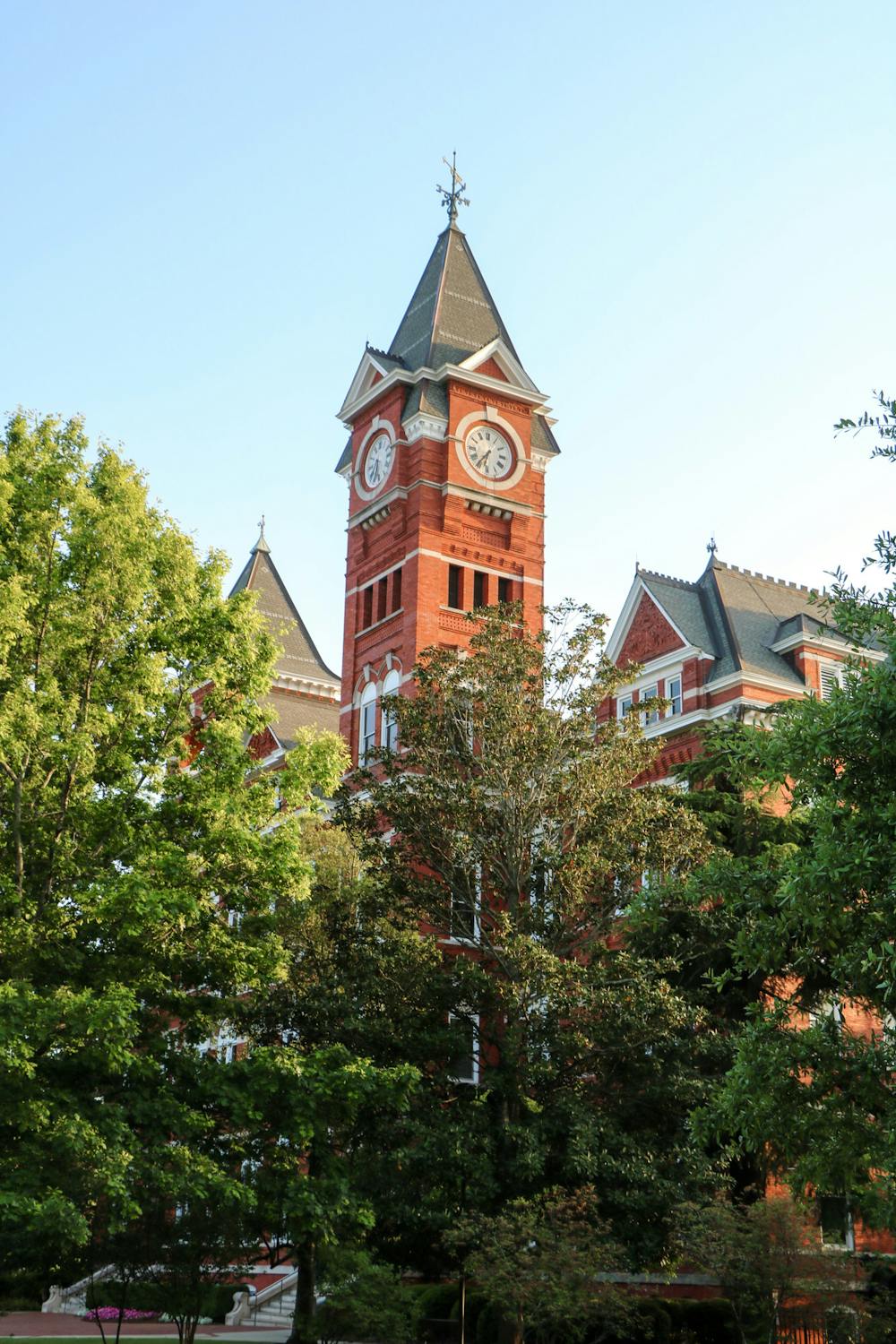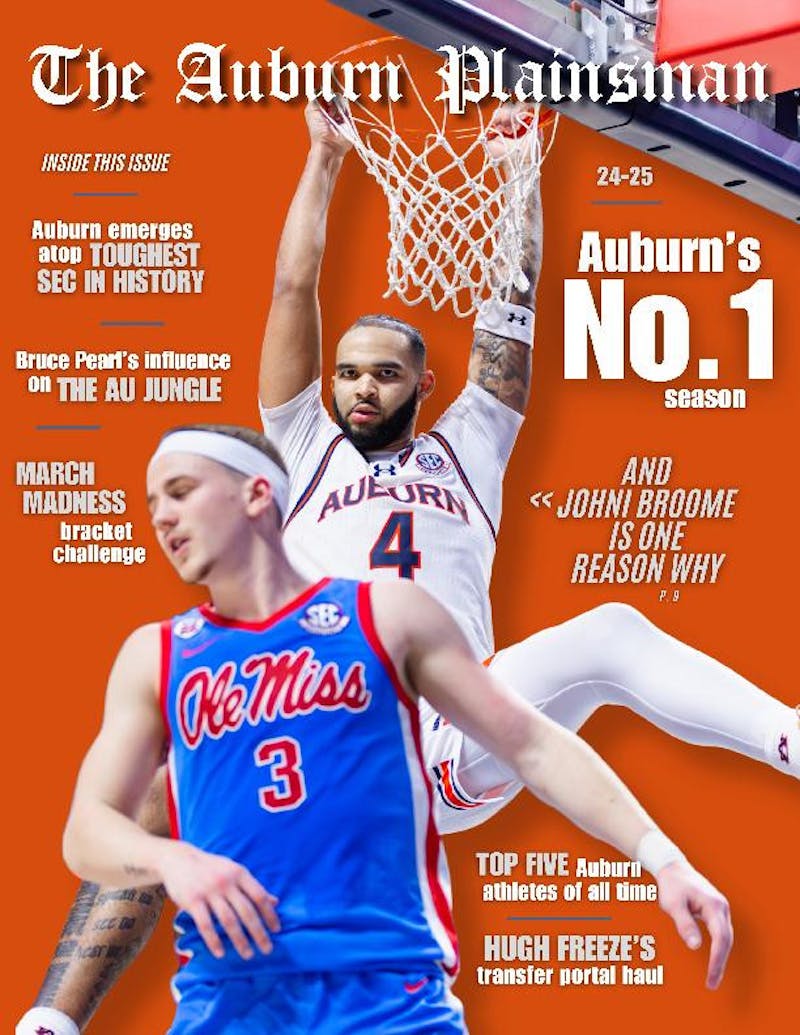On Sept. 16, Alabama State House Representatives Jeremy Gray and Phillip Ensler attended a discussion with members of the Auburn-Opelika community regarding ways to prevent violence among young individuals in Alabama. The event was hosted by Moms Demand Action, an organization dedicated to protecting individuals from gun violence through public safety measures, and was held at Greater Peace Missionary Baptist Church.
The meeting began with an introduction from Reverend Clifford Jones, pastor at Greater Peace Missionary Baptist Church, who has served for over 30 years. In this introduction, Jones thanked Gray and Ensler for their time and shared his hopes for valuable information to be shared.
“I hope that there will be something that we can incorporate in our community to help curb the violence,” Jones said. “It is coming from all directions.”
Jones explained the current state of violence in Alabama and the growing need for initiatives and programs to help end it.
“Many things are happening. The more knowledge we have, the better it is for us to deal with situations that come our way,” Jones said. “If you have not experienced it, sooner or later you will.”
Before handing off the podium to Dr. Paula Wilson, Jones began the evening with a prayer.
Wilson, Alabama chapter leader for Moms Demand Action, introduced the proposal titled "A Regional Conflict resolution and Violence Prevention Initiative for East Alabama," which was put forth by Gray. After giving an overview of Moms Demand Action and the group's future goals, Wilson explained that the purpose behind the organization’s collaboration with Gray is its community-led quality.
“The work will be done from the ground up, not top-down,” Wilson said.
As the Q&A segment of the event began, Gray led the conversation, with Ensler answering a series of questions examining his successful implementation of the same concepts that Gray hopes to introduce to eastern Alabama. Ensler represents State House District 74, located in Montgomery. Gray represents State House District 83, located near Opelika.
According to Ensler, Montgomery Public Schools felt a need to introduce conflict resolution courses because of city-wide gun violence among younger demographics as well as experiences with gun violence in his own life. Ensler, a previous teacher, personally mentioned that he lost over ten of his previous students to gun violence.
“Seeing and experiencing the trauma, how much students became used to going to funerals, eulogies and vigils, it was something that on a deeply personal level, I saw the trauma, and that was what I was most focused on,” Ensler said. “I knew that with Alabama Legislature, passing any sort of gun legislation would be very challenging – not impossible but definitely an uphill battle to say the least.”
Ensler explained that he wanted to find a way to combat gun violence without regulating guns. To him, conflict resolution strategies were a solution to this issue by aiming to put prevention as the main priority and empowering the youth through its implementation.
After discussing the reasoning behind the courses, Ensler shared how exactly the program was implemented across Montgomery schools and the steps that led up to preparing for implementation.
“There were a lot of initiatives happening in Montgomery already, with the Office of Violence Prevention, Ensler said. "A lot of nonprofits, certainly a lot of teachers and counselors in the schools were already doing some of that work."
Ensler explained that with additional funding towards the education system, schools would be able to hire counselors whose sole purpose would be to employ the conflict resolution courses, removing pressure from other faculty members.
However, conflict resolution is not the only focus of the newly hired guidance counselors. They are also trained to deal with absences, truancy and parental mediation.
According to Ensler, the positive effects of the conflict resolution program is shown through quantitative data. This data can range from the number of how many students are participating to something more signifying, such as the changes in student suspensions or disciplinary infractions.
“What we have seen in the high school it’s been implemented in is that office referrals have gone down, attendance has gone up and then when students are in school more, their grades go up,” Ensler said. “So, we have seen some promising data around all of those.”
Gray ended the Q&A with a question relating back to his own plan for implementing the program: How realistic is it running a program without the support of local schools and relying on the community instead? To this, Ensler discussed ways to work around this barrier.
“It does not have to be in just one school or district. It’s something where it could go through non-profits who are doing the work, and if they have a relationship with a school district, principle or teacher, then they can potentially go into the school and work with young people," Ensler said. “There are lots of different ways to do it and make it happen, and I think regionally, it's certainly happening. I think one of the challenges would be counselors having to travel from different places, but that’s not a reason not to do it.”
The third guest speaker in attendance was John Riley, program manager for Save Our Streets Montgomery. As a city-sponsored initiative, Save Our Streets Montgomery is focused on reducing shooting incidents through evidence-based interventions like its street outreach program.
“Our street outreach program right now consists of nine interventionists. These are the individuals we call ‘boots on the ground.’ They’re out in the communities where our hotspots are," Riley said. "They work with the community, build bridges with the community and identify what we call the ‘shooters.’"
Prevention is crucial to the street outreach program, as Riley shared the program’s strategies in putting a stop to violence before it occurs.
“That’s our thing, is to be more up-front and to help prevent more violence before it starts,” Riley said. “We do this through intervention; we do it through mediation, and we have a number of different ways we try to stop things before they happen.”
According to Riley, evidence has shown that the outreach programs have proven successful in other cities like Baltimore, Chicago and Los Angeles. All cities reported a decrease in gun violence, with some of these reductions ranging from 30 to 60%. However, regardless of the specific numbers, all of the cities were basing this reported decrease purely on data from their street outreach programs.
The methodology behind implementing the street outreach program can also involve several key factors, including how clients enroll in the program and the purpose and training of intervention professionals.
“Live Free is a national organization that has set up hundreds of community violence intervention programs throughout the country,” Riley said. “So, they were the ones that were contracted to provide the training for Save Our Streets Montgomery.”
To find clients to enroll in the prevention program, Save Our Streets uses connections within what Riley considers “high-risk” communities to gain a better understanding of the specific residents and possible violence happening in those areas.
“We try to build those relationships with the community, because who better knows what’s going on in the community than the people that live in that community,” Riley said.
Through using their interpersonal connections, Riley and his team are better able to help those committing violent crimes in the community and offer a solution for them based off the individuals personal history.
“If I tell a young man to put his gun down, I got to be able to replace it with something,” Riley said.
Gray’s proposed initiative will be further expanded upon on Oct. 16 at 5:30 p.m. at the Opelika Public Library, where a second discussion will take place about the Auburn community's interest in implementing violence prevention programs.
Do you like this story? The Plainsman doesn't accept money from tuition or student fees, and we don't charge a subscription fee. But you can donate to support The Plainsman.





